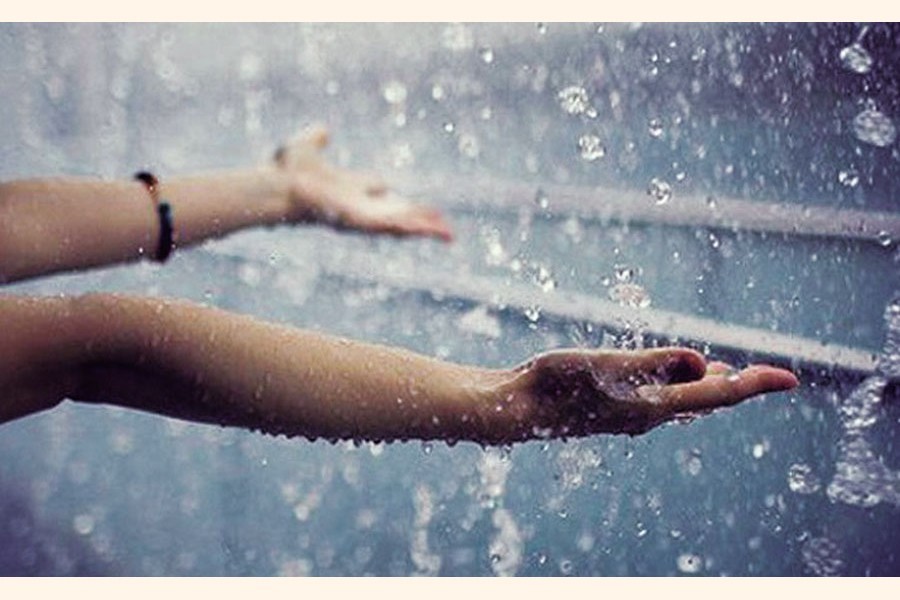
Published :
Updated :

Scores of long-time Dhaka residents can still graphically remember the daylong monsoon rains. These people comprise the ones now in their seventies and eighties. The rain-drenched city, its sylvan tree- and bush-dominant nature and the low-height concrete and tin-shed residences getting sodden were routine sites. The monsoon rain would continue without break throughout the day to bless the people, on some days, with soft afternoon glows. People now seventy to eighty years old were the direct witness to these distinctive monsoon spectacles --- the air filled with the unknown aroma of wild trees' leaves and flowers, neighbourhood muddy roads turning slippery with puddleshere and there. The menace of water-logging had yet to beset Dhaka in those days.
Out in the major roads, cycle-rickshaws would dominate the scene. The newly built footpaths would remain filled with male and female pedestrians using black umbrellas. Colourful, fancy Japanese ladies' umbrellas had been largely unknown then. The road scene would be punctuated by speeding private cars and town-service buses. Some roads would find horse-drawn carriages leisurely moving on medium distances.
Except a few, small song-birds in general would remain invisible on the rainy days. But glimpses of rain-soaked crows could be made out through the leaves of trees. The desperate caw-caws of these hungry birds would make the soft-hearted people restless. The house sparrowswould be seen perched on the balcony rails with occasional chatter and flapping of wings.Croak of frogswould make the nights surreal, leaving the chirping insectsto add to the music. There would be few vendors on a typical monsoon day. The same applied to beggars.
Monsoons would appear in the emerging city of Dhaka every year with this distinctive look. It spanned the decades from the 1950s to the '70s without much respite. The monsoon downpour would begin in the wee hours, and continue throughout the night to greet the children and adults alike with rain swept gusts. Most of them would be found looking out the windows in the morning. All of their longings had one thing in common --- praying that the driving rain not stop. Many primary schools would be declared closed for the day due to rain. Ironically, the closures would turn futile with children being drenched to their skin, the umbrellas unfurled. Attendance at well-known high schools would be sparse. Alongside students, sizeable number of teachers would remain absent. Attendance at government offices would remain poor every monsoon.
However, in many cases the government employees' not attending office was caused by the localised flooding of roads. It was not a water-logging. Due to many residential areas in Dhaka being located in low-lying lands near vast water bodies, roads and residences in those days would remain submerged. It would continue for a couple of days, with the rain water receding back to the water-filled mini-'haors'. This small-scale monsoon flooding used to return almost every year, causing immense sufferings to the local residents.
People living and doing business on the banks of the overflowing Buriganga, the Turag and the Balu Rivers would emerge as the worst sufferers. Fifty to seventy years ago, Dhaka had yet to have even a semblance of the modern drainage in place. By making do with crude methods for water to flow through the nearly encroached canals, Dhaka would have to deal with its monsoon ordeals --- then just in the making. In spite of this fact, the present monsoon woes of the capital appear like nightmares on being compared to the past fallout of the annual rainy seasons. Back in those days, certain city suburbs would go under water. But the freshness associated with the new water would remain intact. Woefully, this gift of monsoon is long gone.


 For all latest news, follow The Financial Express Google News channel.
For all latest news, follow The Financial Express Google News channel.